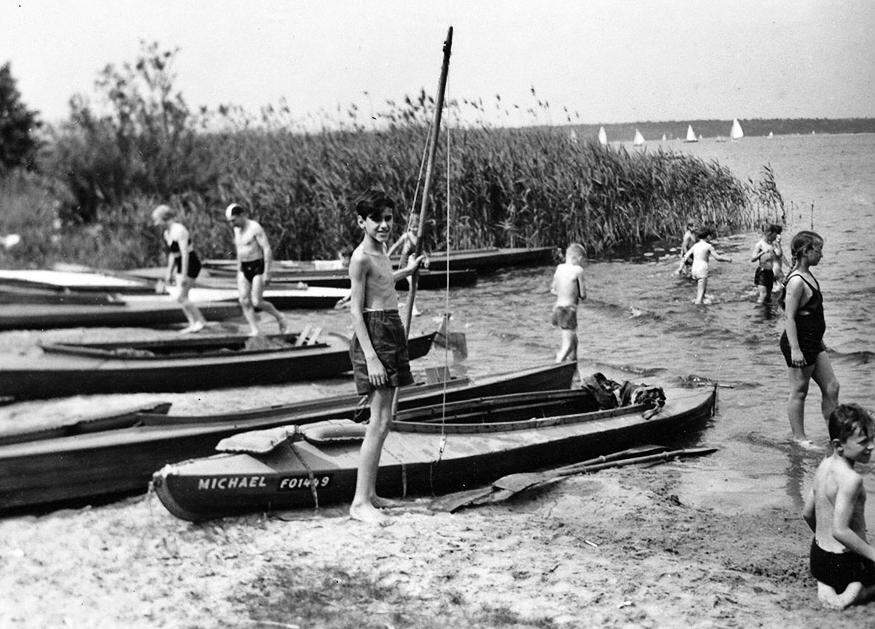
Figure 1--There is a large lake in the southwestern quadrant of Berlin--Wannsee. It is not a park itself, but is widely used by Berliners for recreation. Here is a view of Wannsee Lake, we think in the 1940s. Notice the sailboats in the background. |

|
There is a large lake in the southwestern quadrant of Berlin--Wannsee. Geologically, it is a massive gourge scraped out by glaciers furing the Ice Age. The northern end runs into the River Havel which has barge access to the Baltic Sea. At the southern end is the Glienicke Bridge (also called the Wannsee Bridge), which is part of Königstrassee between Berlin and Postdam. The first known inhabited area along the lake complex was the ancient village of Stolpe, with written records dating back to 1299. Stolpe is located on the Stolpehensee, one of the smaller lakes comprising the Wannsee complex. It has a charming old church. The area today is Steglitz-Zehlendorf, the westernmost area of Berlin. Royalty built palaces in the area because of the beautiful lake, scenery, and recreational opportunities. Glienicke Palace designed by Karl Friedrich Schinkel for Prince Carl of Prussia (1826). At the time, Berlin was a much smaller city and thus game could be hunted in the area. The Wannsee complex is primarily composed of two connected lakes, although there are a number of smaller lakes.
Germans divide Wannsee into two lakes--the large Großer Wannsee (Greater Wannsee) and smaller Kleiner Wannsee (Little Wannsee). They are divided only by the Glienicke Bridge. Großer Wannsee is deep enough (up to 9 meters) for both swimming and boating. Wannsee is not actually a park itself. Private individuals live all along the shore. It is, however, widely used by Berliners for recreation. Wannsee Lake itself is the most important swimming and boating recreation area for Berliners. The is an open-air lido with one of the longest inland beaches in all Europe. Lido is a term not much used in America. Lido is the famous French cabaret located in the Champs Elysee in Paris, but the term in Europe generally means a public outdoor swimming pool and a range of supporting facilities. It is also used to describe a beach swimming area where children can paddle and play in the sand and adults can swim and sun. Commonly there are also facilities for other water sports like boating. Strandbad Wannsee was built in 1929-30, designed by architect Richard Ermisch. It is located along the eastern shore of the Lake, part of the Nikolassee area. This was an important historical place during the Cold War. In three spectacular events, away from public view, the Glienicke Bridge was used by the U.S.government and the Soviet government to exchange high-level agents. One was KGB spymaster Rudolf Abel. The Bridge is thus sometimes called the Bridge of Spies. Pfaueninsel (Peacock Island) is an island in the River Havel near Potsdam and Brandenburg. The island is part of the Palaces and Parks of Potsdam which are popular with tourisrs. Pfaueninsel became a popular destination for Berlin day-trippers. Pfaueninsel has been turned into a nature reserve in accordance with the European Union Habitats Directive and a Special Protection Area for wild birds. It was an area much enjoyed by isolated West Berliners during the Cold War. Ironically, this beautiful location where so much enjoyment and hapiness took place was the location of one of the most evil meetings in hostory--the notorious Wannsse Conference during World War II (January 1942). SS-Obergruppenführer Reinhard Heydrich chaired a meeting of senior NAZI officials at Wannsee Villa as they ironed out details of the Holocaust. The Potsdam palace of the former German imperial family were located along the lake. After World War II Allied Potsdam Conference was held there (July 1945).
Lehrer, Stephen. Wannsee House and the Holocaust.
Navigate the Boys' Historical Clothing Web Site:
[Return to Main German parks page]
[Return to Main park outing national page]
[Return to Main 20th century family page]
[Introduction]
[Activities]
[Biographies]
[Chronology]
[Cloth and textiles]
[Clothing styles]
[Countries]
[Topics]
[Bibliographies]
[Contributions]
[FAQs]
[Glossaries]
[Images]
[Links]
[Registration]
[Tools]
[Boys' Clothing Home]
Navigate the Boys' Historical Clothing Web Site:
[Sailor suits]
[Sailor hats]
[Buster Brown suits]
[Eton suits]
[Rompers]
[Tunics]
[Smocks]
[Pinafores]
